Led by the experience of the previous day in Karlskrona where I almost stayed hungry because the restaurant I wanted to go to was closed, as soon as I got to Ystad I headed straight to a restaurant for which I had found some recommendations. To start with, the place was practically on the shore of the Baltic Sea, but although it was a sunny day, there was a very strong wind so I was glad I was sitting in a closed terrace of the restaurant enjoying my view from there.
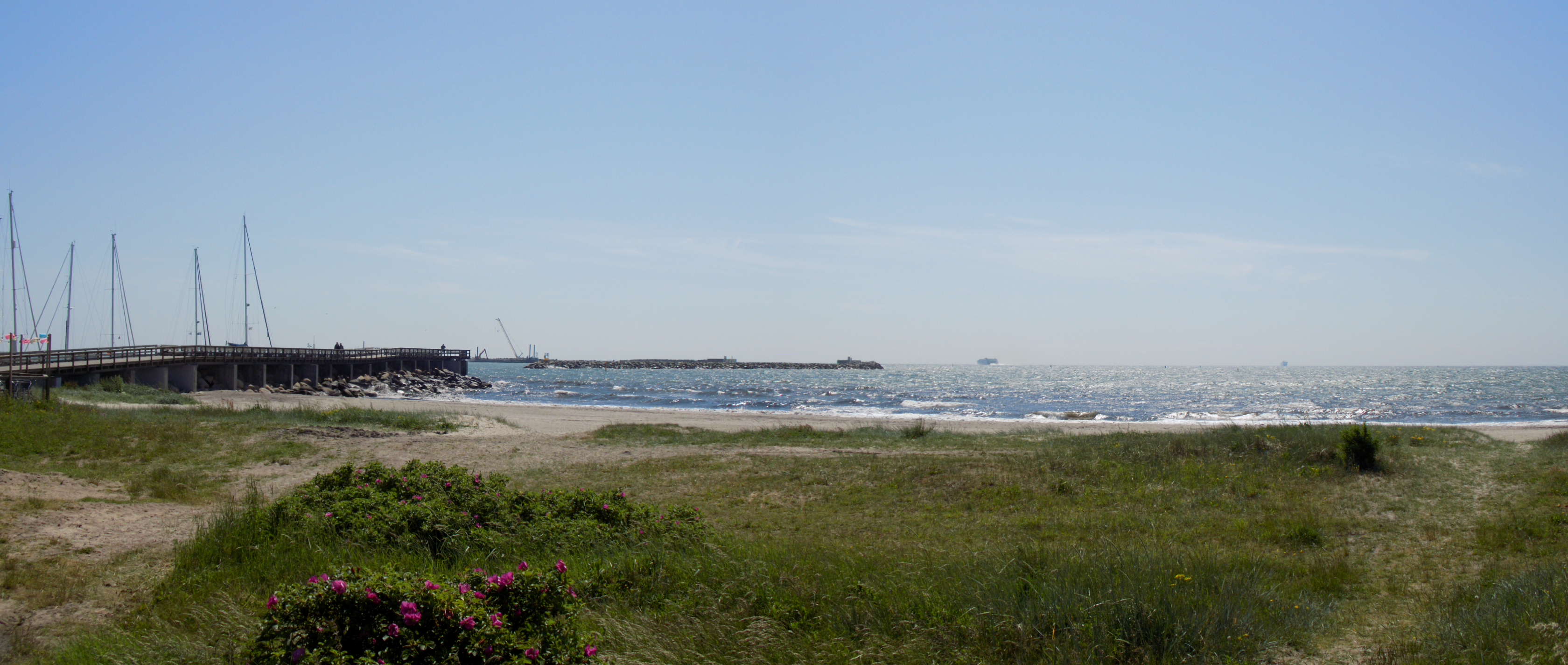
It turned out that the restaurant did not pay any attention to the elegance of plates and cutlery, but that did not take anything away from the quality of the fish that was offered. Thus I first ordered a starter with shrimps and as my main course I chose grilled herring filets, since in my mind it is the most typical fish related to Scandinavia and I rarely eat it elsewhere. When they brought me the main dish, however, I almost doubled with laughter. Namely, what was in front of me was the nightmare of any typical Balkan person – over the herrings, potatoes and salad there was a dollop of – jam made of redcurrants or some other similar fruits.
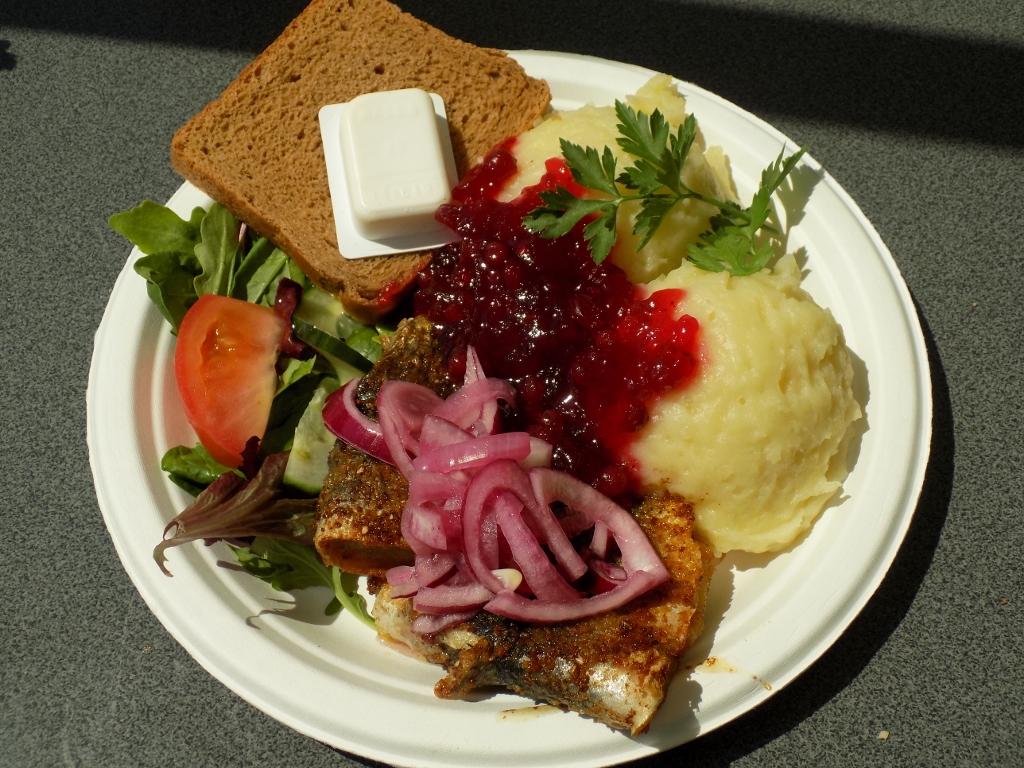 Scandinavian specialty – grilled herrings with sauce in the shape of redcurrant jam
Scandinavian specialty – grilled herrings with sauce in the shape of redcurrant jam
I don’t know if you are aware of it, but in the Balkans people never mix meat, including fish, with anything sweet. Let me be honest, although I personally love Asian food where you regularly have different tastes mixed, when it comes to “classically” prepared meat or fish, I’m also not used to covering it with something sweet. However, I knew that this was not a rare combination in Sweden, so I bravely started to eat my meal and I certainly ate it all up.
After the lunch, despite the strong wind, I walked along the wooden pier that extended towards the depths of the Baltic Sea and I took this opportunity to take a photo of myself sitting on a bench.
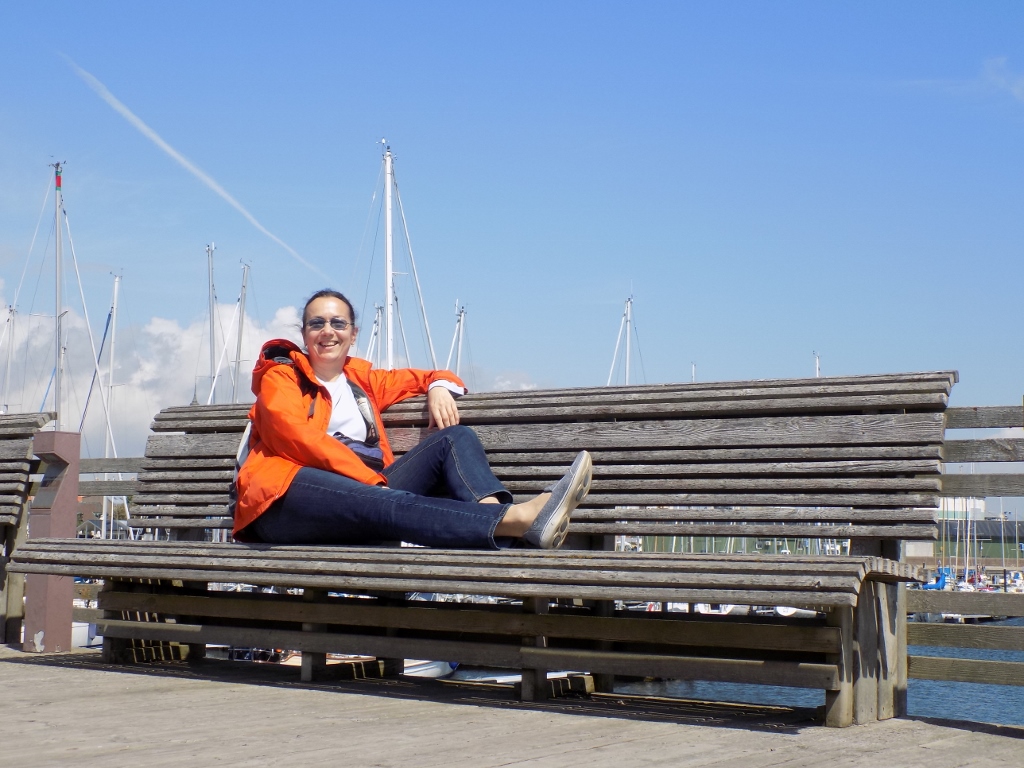 An advanced version of a selfie
An advanced version of a selfie
From the pier, across the marina, I could also enjoy the view at the centre of Ystad.
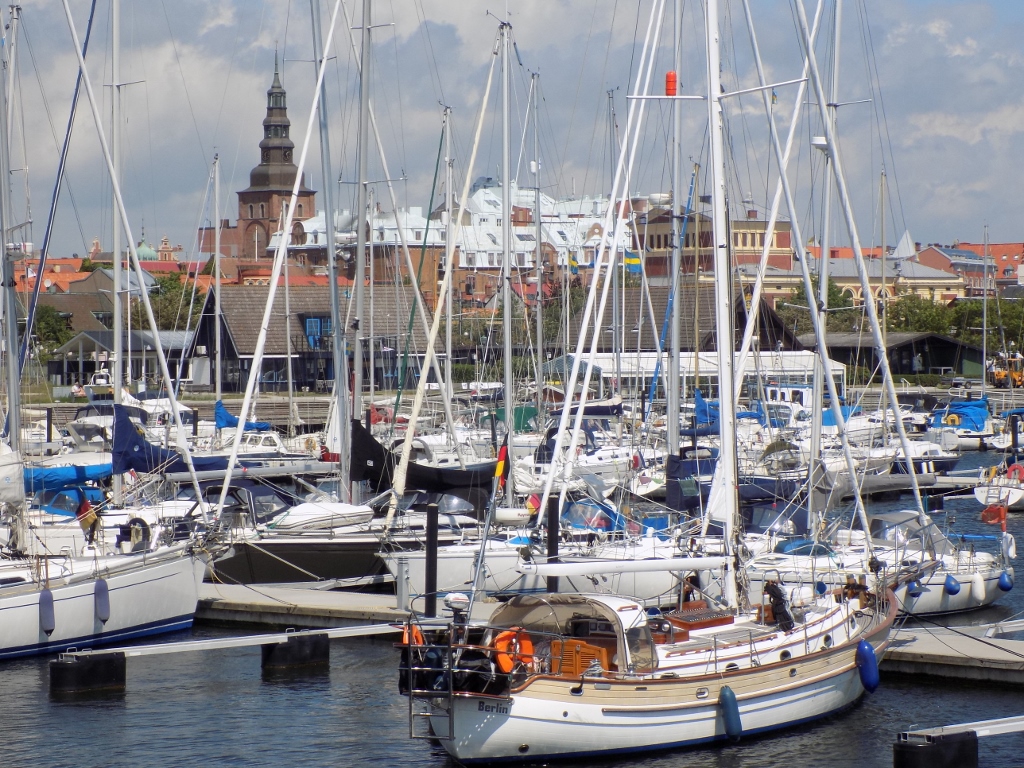 Marina and the downtown area of Ystad
Marina and the downtown area of Ystad
Although there are indications that the place was founded in the 11th century, officially it was mentioned in historic documents for the first time in 1244. Just like Simrishamn, Ystad as well used to belong to Denmark until 1658 and the peace treaty called the Treaty of Roskilde. By the way, if you are interested in the town of Roskilde in Denmark and want to find out a little about its past and present, have a look at the text on https://www.svudapodji.com/en/denmark-1/.
Today, Ystad is one of the best preserved medieval towns in the province of Scania (the most southern province in Sweden). What gives it a special charm are over 300 half-timbered houses. Almost as soon as you enter the central part of the town, you start coming across houses of this type.
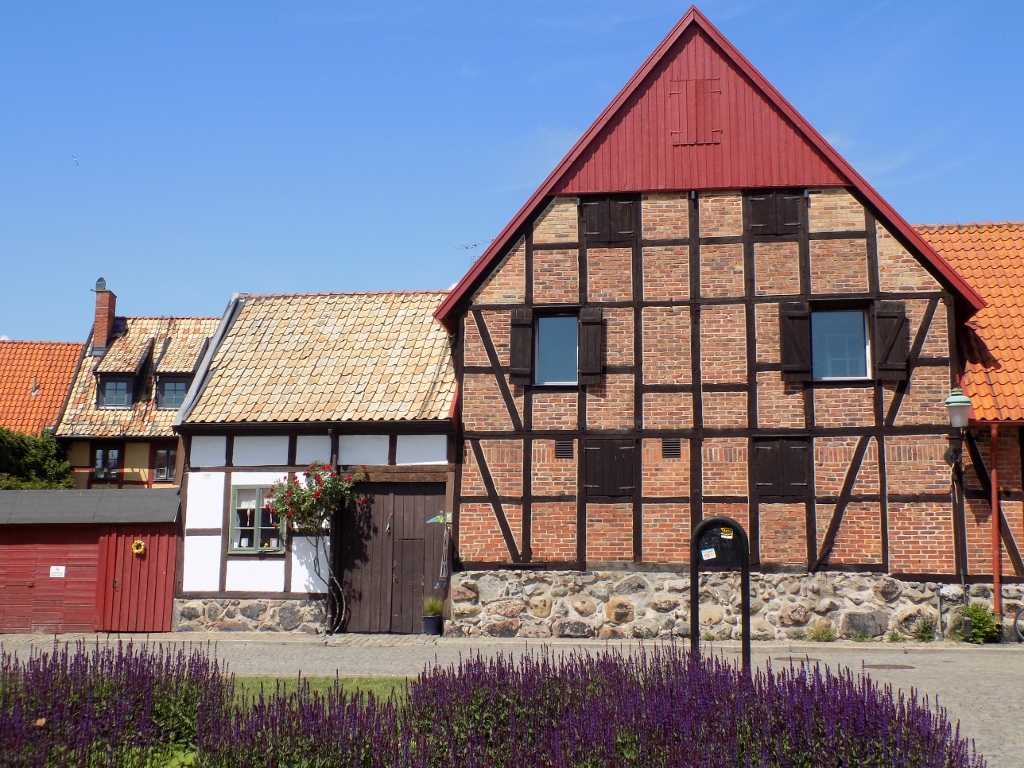 Half-timbered house in Ystad
Half-timbered house in Ystad
Even those houses that have not been made in this style seem pretty and picture-perfect.
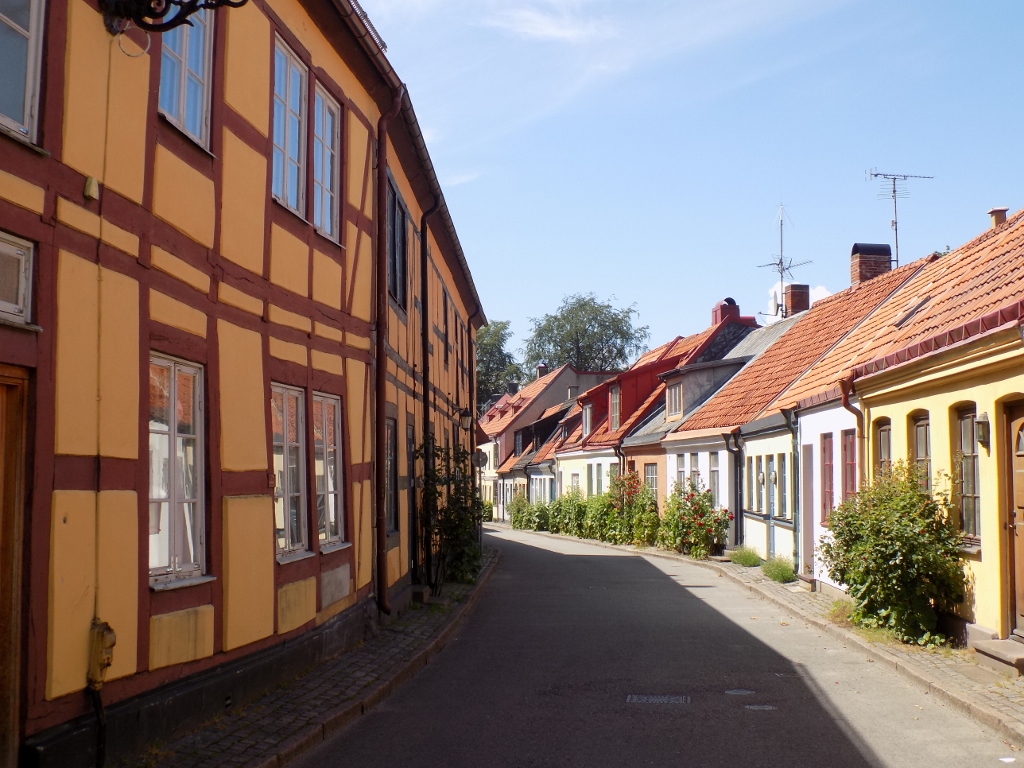 A picturesque street in the centre of Ystad
A picturesque street in the centre of Ystad
From one such street, it is possible to see the tower of the Church of the Virgin Mary (Sankta Maria kyrka), the oldest parts of which originate back in the 13th century.
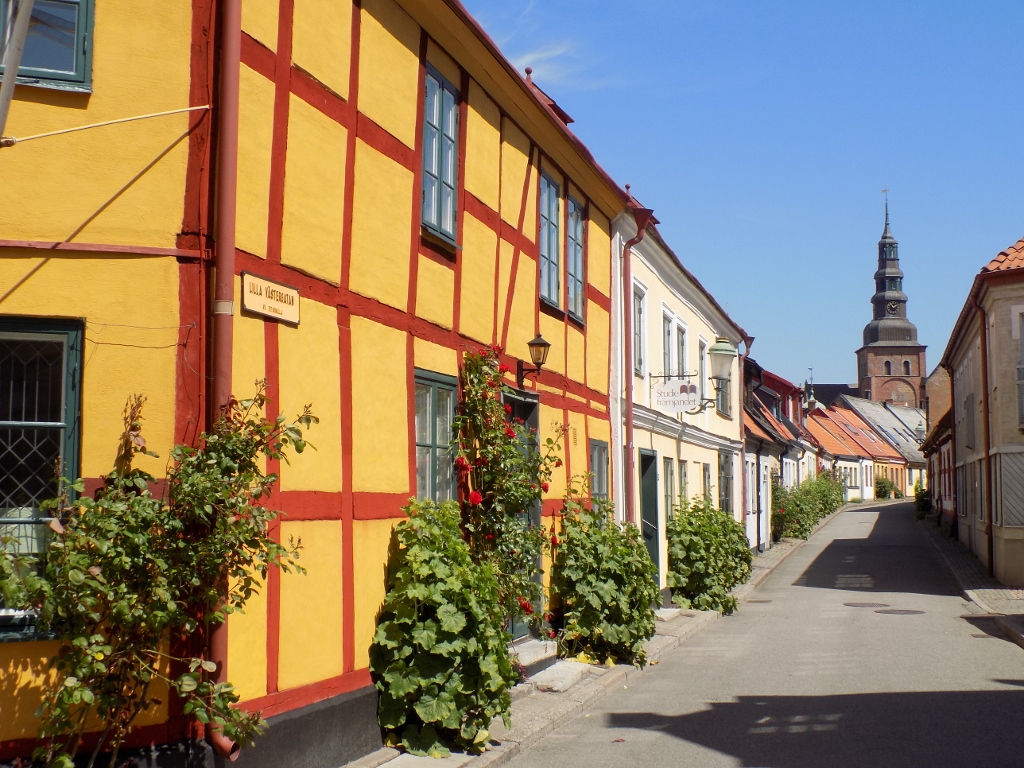 A street in the centre with the tower of the Church of the Virgin Mary in the distance
A street in the centre with the tower of the Church of the Virgin Mary in the distance
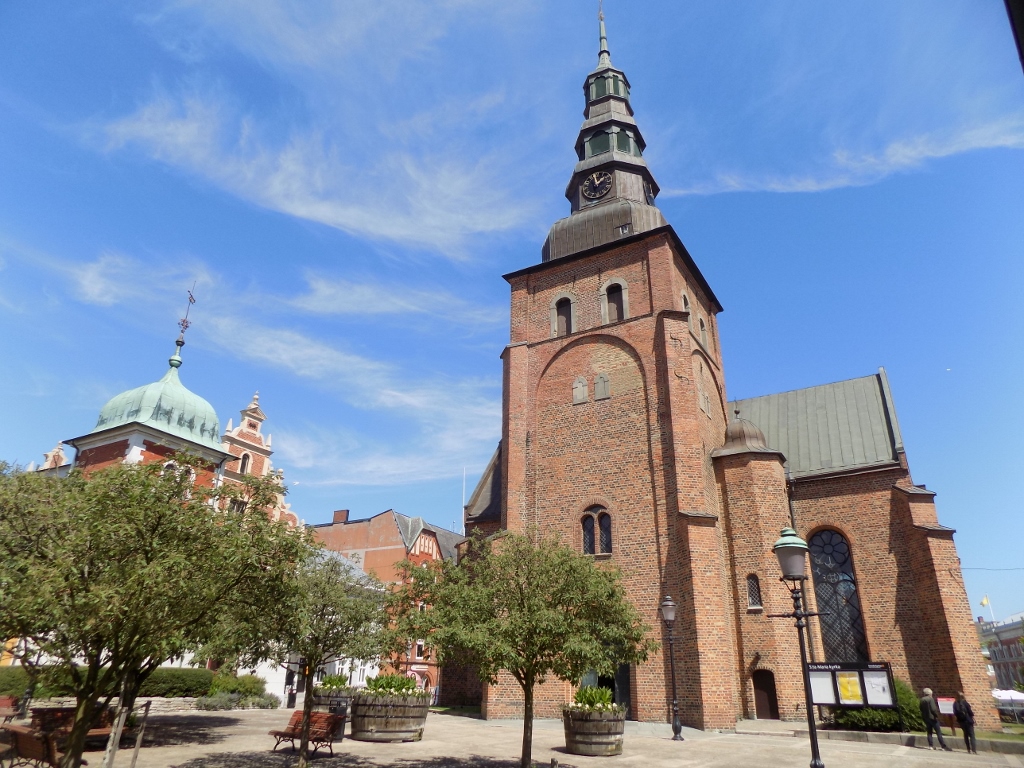 Church of the Virgin Mary in Ystad
Church of the Virgin Mary in Ystad
Not far from this church, there is also a house called Änglahuset the facade of which is dated back to the 1630’s and even today it seems completely impressive.
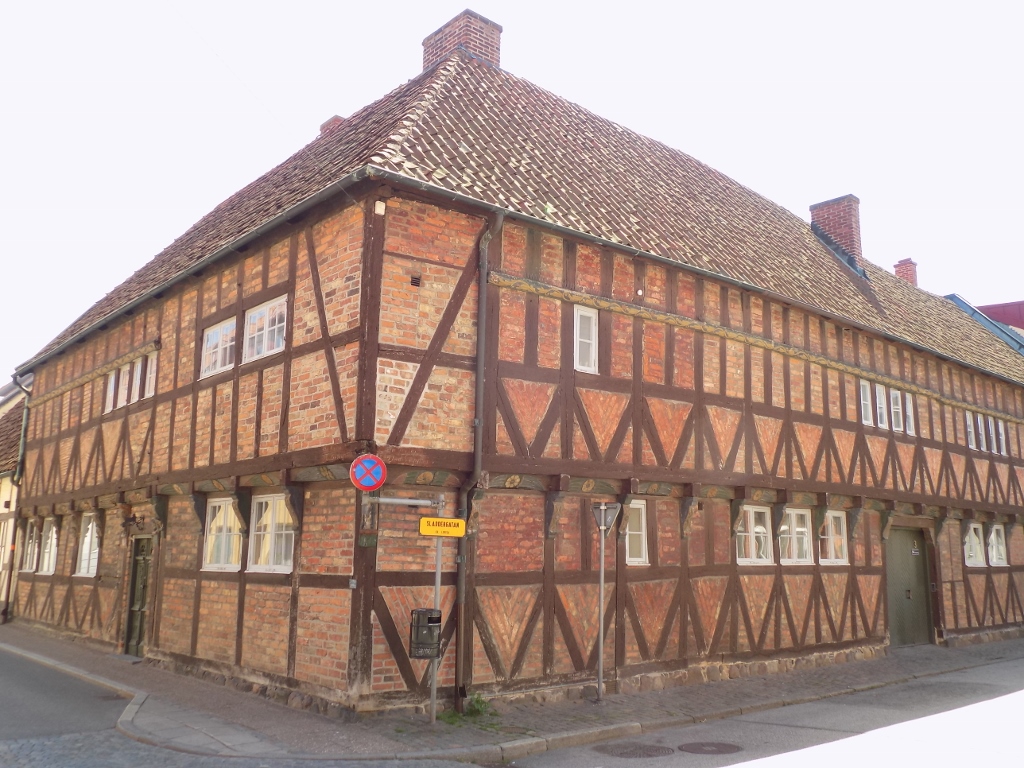 Änglahuset
Änglahuset
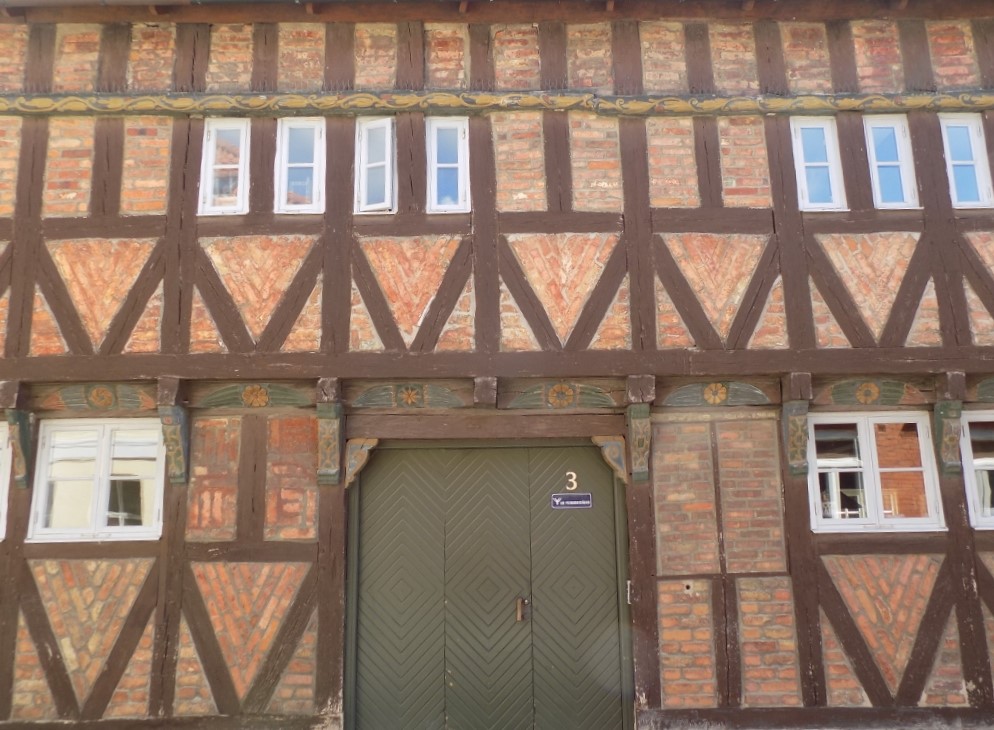 Änglahuset, a detail
Änglahuset, a detail
Ystad is also included into the so-called European Route of Brick Gothic, i.e., a tourist route that connects towns and cities around the Baltic Sea in which there are interesting architectural creations made of bricks during the period of Gothic. This route includes Roskilde in Denmark, as well as the towns of Gdansk, Olsztyn and Torun in Poland. If you are interested, all three places are covered in my texts related to the journey around Poland in 2017, with plenty of photos. The simplest thing is to go to the Menu of this blog, then Contents, and in the list of the texts find those links that refer to these towns in Poland.
One such edifice is also one of the best preserved monasteries in Sweden. This is the Greyfriars Abbey.
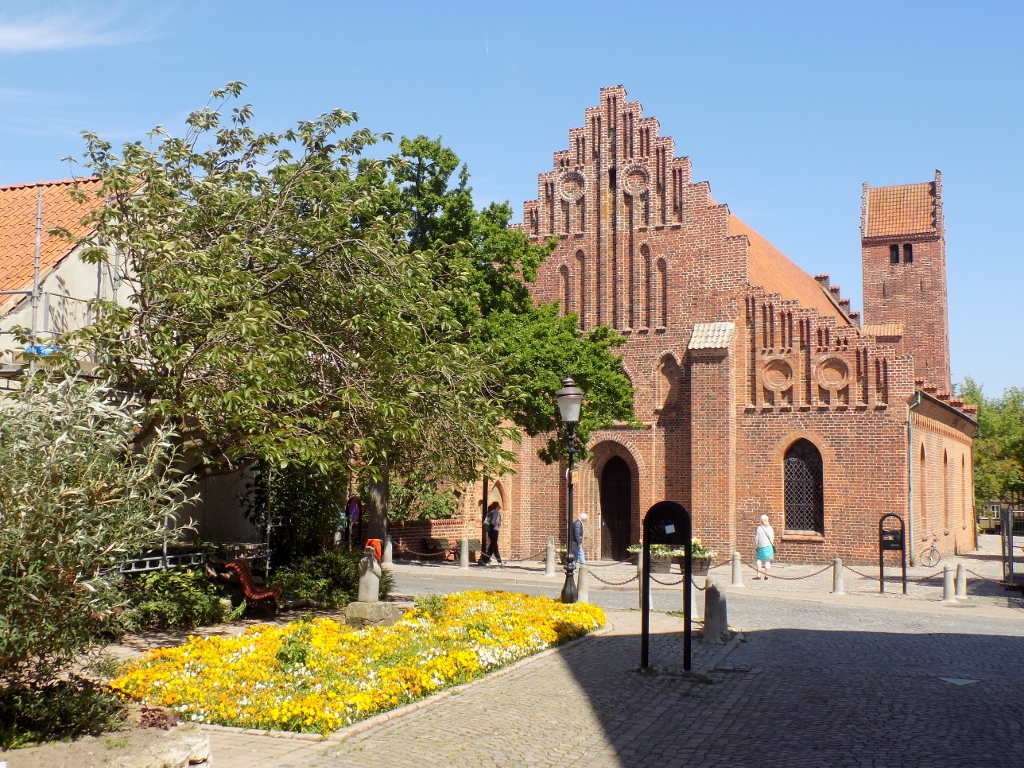 Greyfriars Abbey
Greyfriars Abbey
This abbey which formally consists of the Church of St Peter (Sankt Petrikyrkan) and another wing is actually not a religious place at all now, but rather it houses the Museum of the Cultural History of Ystad. I found the museum quite modest, but the surroundings of this former monastery are truly very pretty, while the town keeps putting in great efforts to make it even more attractive by creating and maintaining flower and herb gardens right beside the monastery-museum and other picturesque buildings.
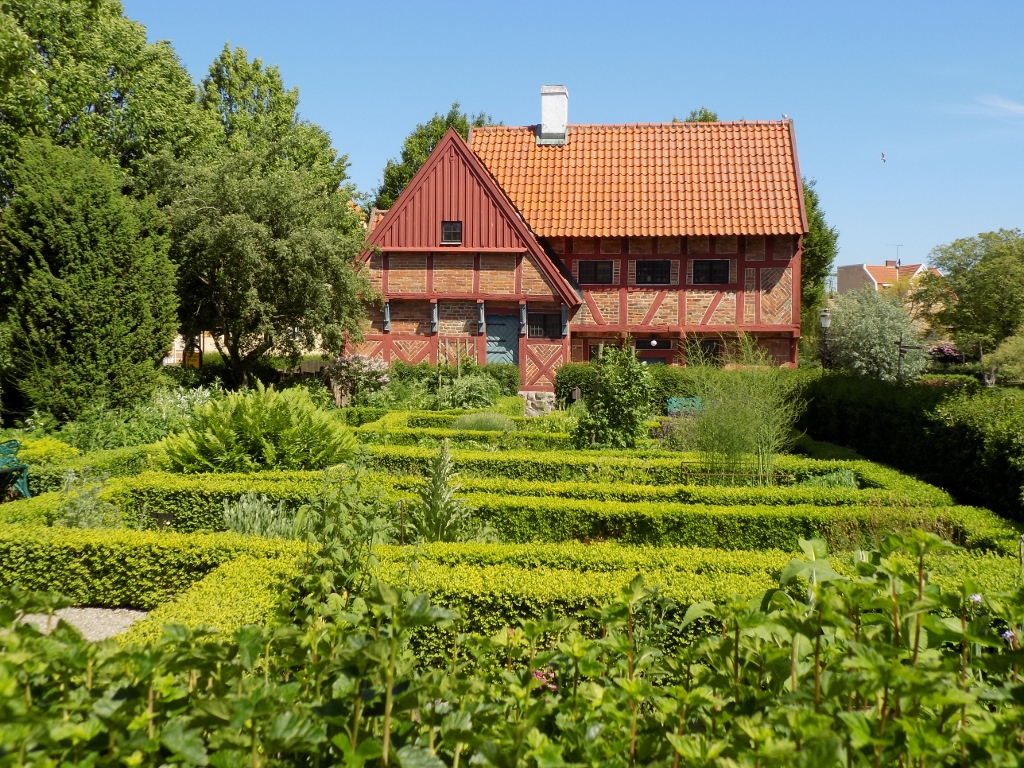 A garden near the Greyfriars Abbey
A garden near the Greyfriars Abbey
After this, I also went to the pedestrian street in which it is possible to see the oldest house in Ystad built in the half-timbered style that has survived to date. It is almost incredible that the house was built during the 1480’s!
With this I practically finished with my sightseeing of Ystad and that’s why I headed directly for the railway station, but I still looked around myself enjoying the sights.
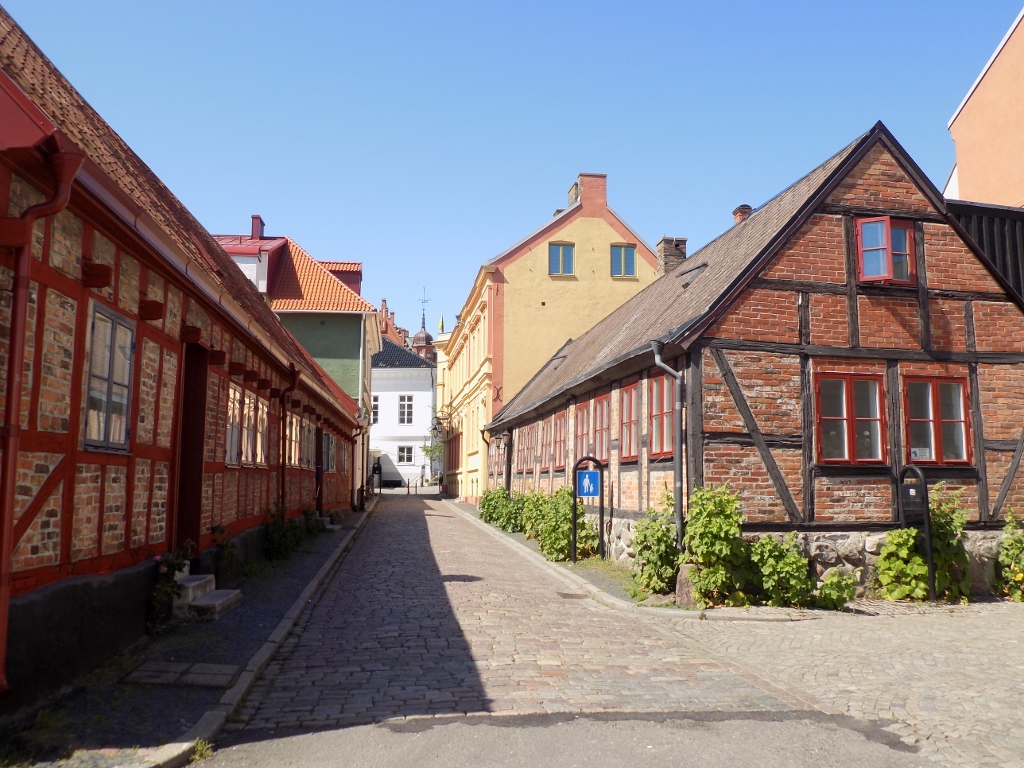 Details from Ystad
Details from Ystad
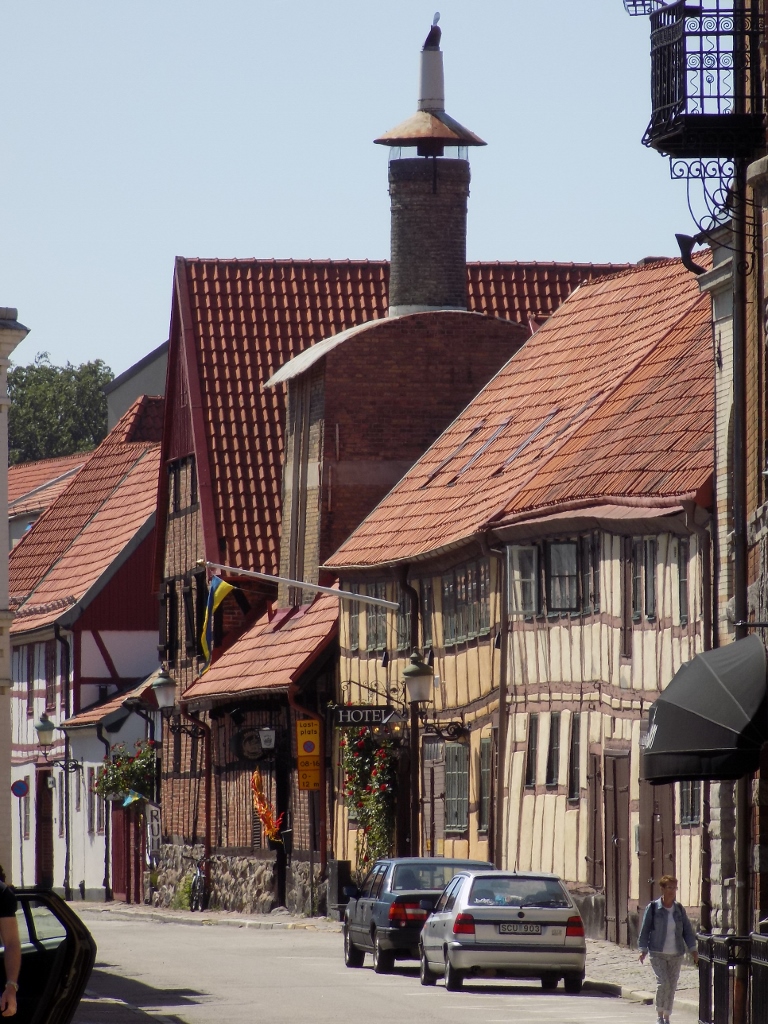 Details from Ystad
Details from Ystad
The next place I wanted to visit and see was something completely different. To start with, I had to get to a suburb of Malmö, third largest city in Sweden. I wanted to visit a shopping mall. Of course, I was not interested in shopping at all, but I was keen on visiting this temple to the religion of consumerism for completely different reason. It was all about architecture and the exterior appearance, while the mall is called Emporia.
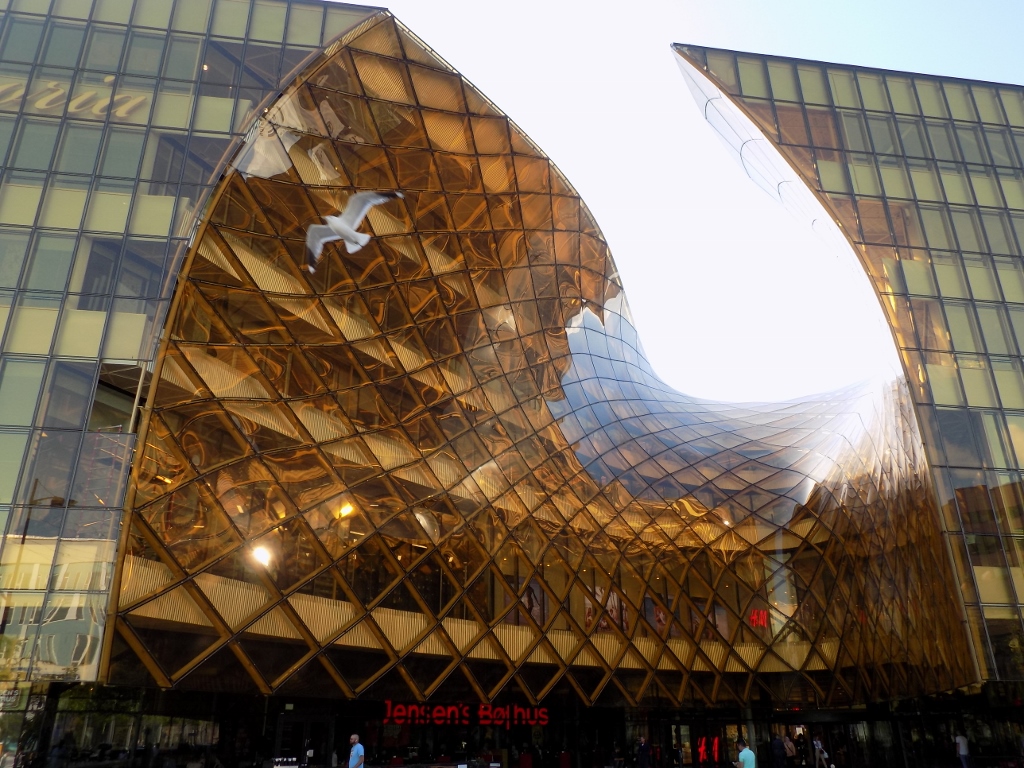 Main entrance into shopping mall Emporia
Main entrance into shopping mall Emporia
This shopping mall is one of the largest in all of Scandinavia and its interior is, if I may say so, quite typical, but from the east and the west sides there are elements that make it specific and easily recognisable.
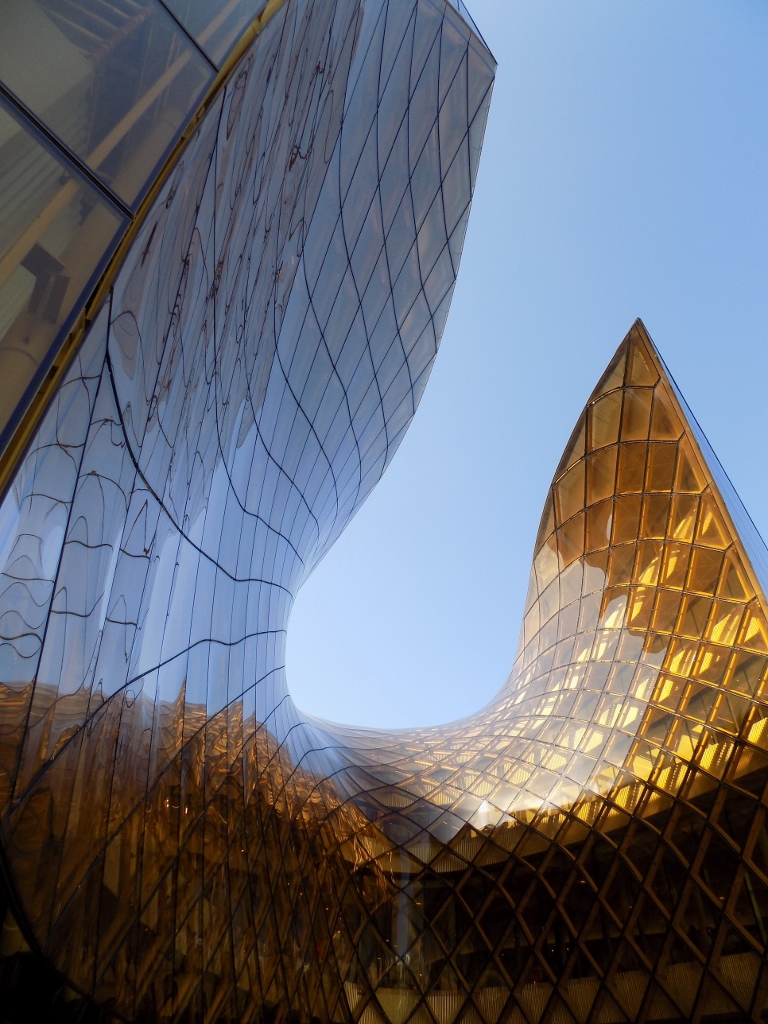 Shopping mall Emporia, architectural decoration at the east entrance
Shopping mall Emporia, architectural decoration at the east entrance
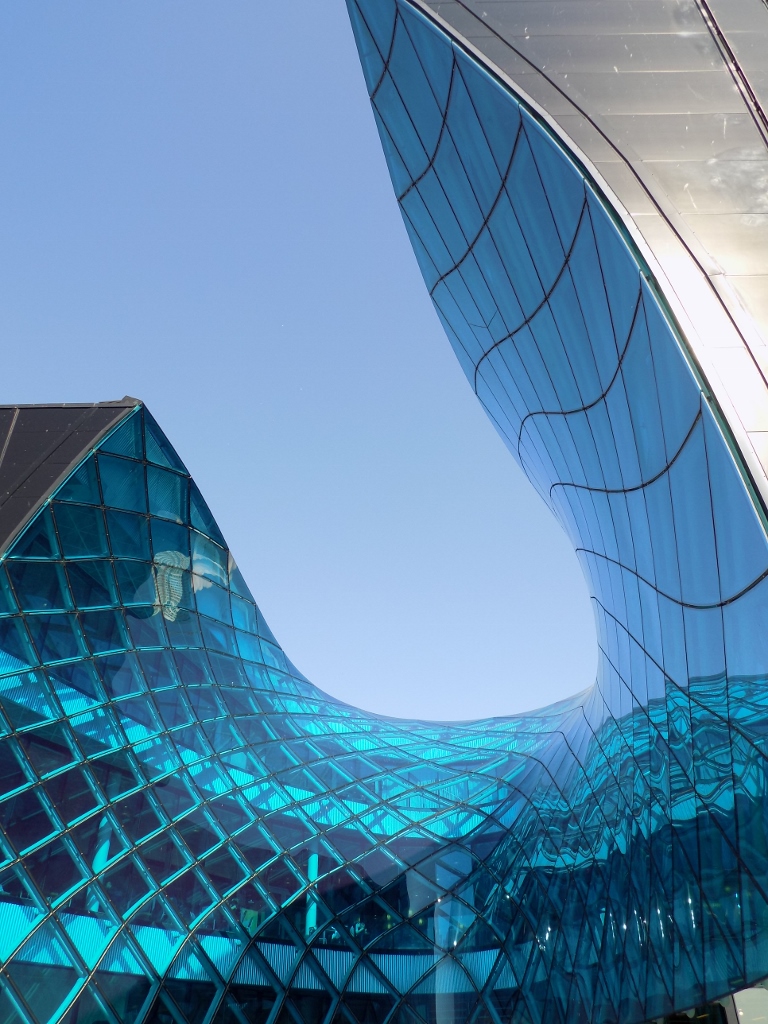 Shopping mall Emporia, architectural decoration at the west entrance
Shopping mall Emporia, architectural decoration at the west entrance
Here, however, my interest in contemporary architecture in Malmö was not exhausted. On the contrary, I took a bus and went towards the centre, but I got off before the final stop since already from my transportation I saw what was to be my next destination. This was a high-rise building with 54 floors called “Turning Torso.”
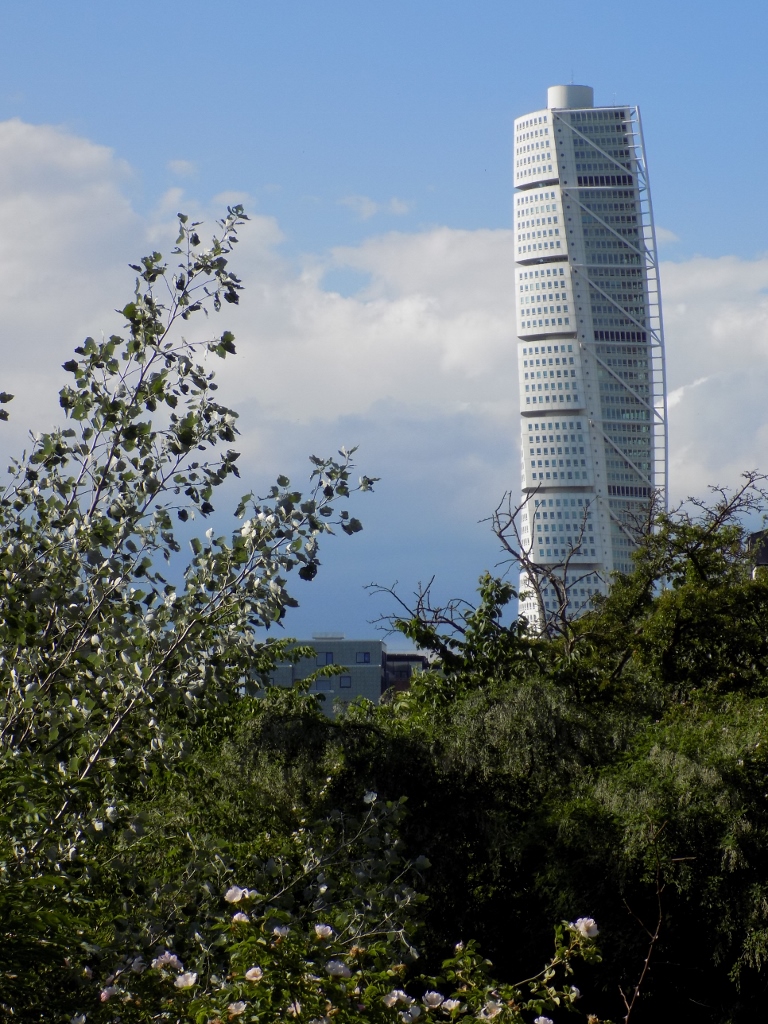 “Turning Torso”
“Turning Torso”
From the bus stop I walked to the high-rise. This is a residential building that is currently the highest in all of Scandinavia. What makes it special is its literally “twisted” structure and it is considered the first twisted high-rise building in the world. Its author is a Spanish architect that has previously made a sculpture entitled “Twisting Torso” which was actually what inspired a director of the company that is now the owner of the building to commission the designing of precisely this type of edifice.
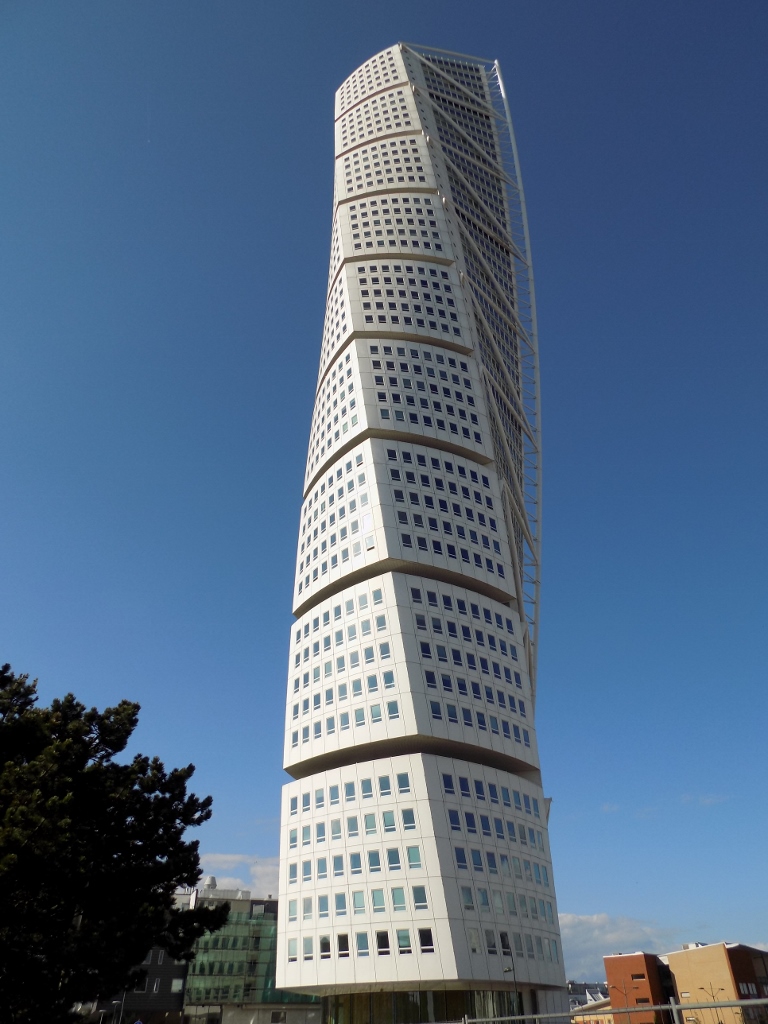 “Turning Torso”
“Turning Torso”
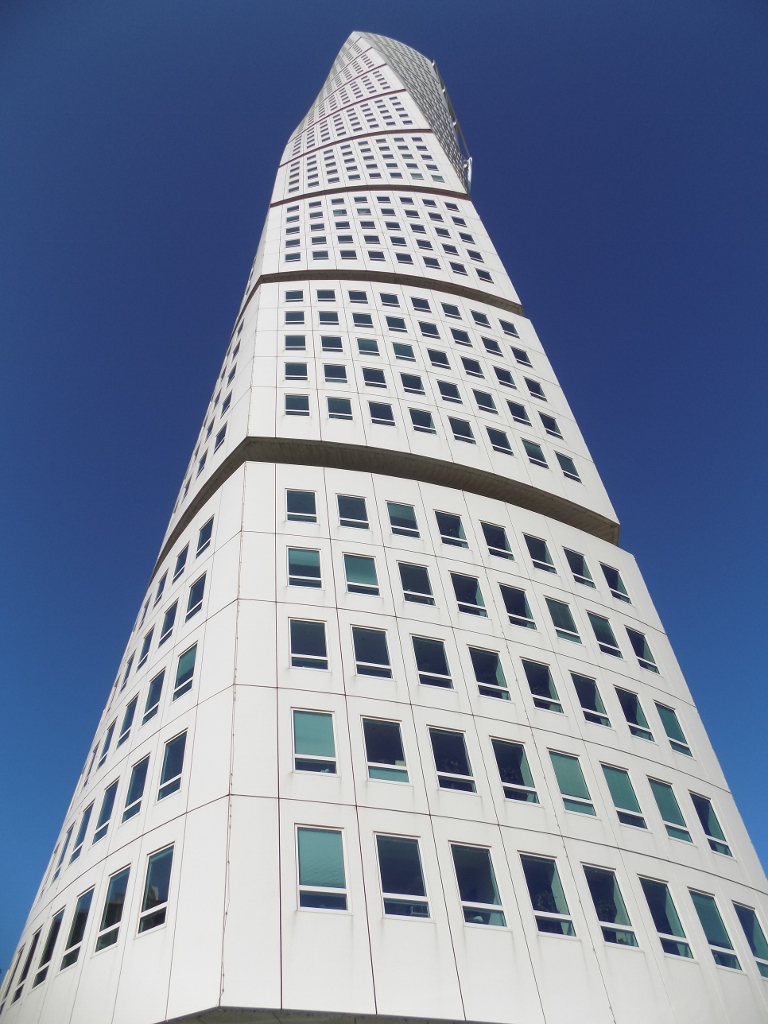 “Turning Torso”
“Turning Torso”
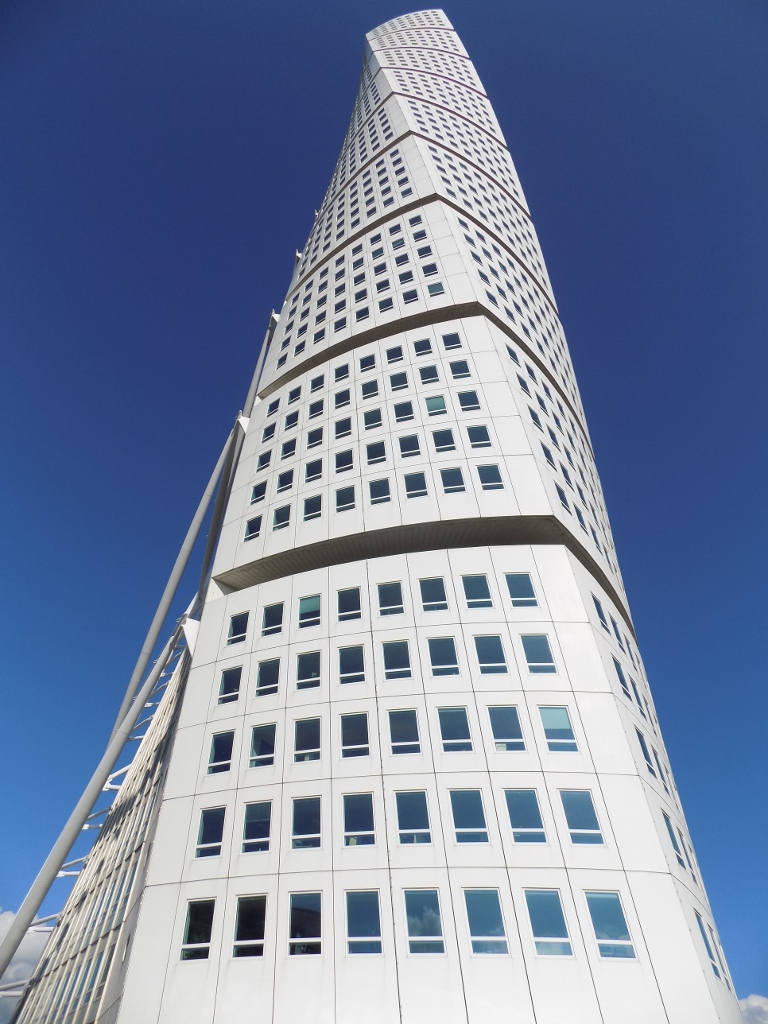 “Turning Torso”
“Turning Torso”
Following these modernistic architectural marvels, I went for a very brief sightseeing visit to the centre of Malmö. I must admit that by this time I was quite tired since I walked a lot this day, so I just made a nice circle around the very centre of the city. First I walked over to the main square where there is the City Hall from 1546 on this occasion beautifully lit by the Sun.
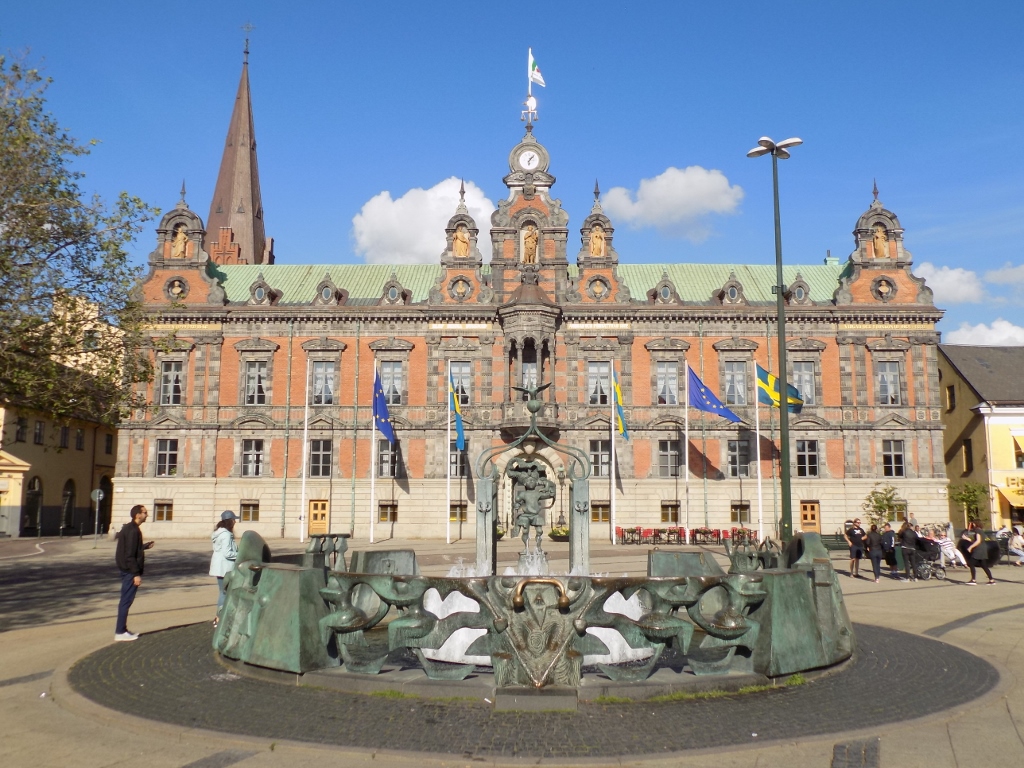 City Hall in the main square of Malmö
City Hall in the main square of Malmö
My final destination during this stroll was another square – Gustav Adolfs Square, in which there is a sculpture of the heraldic symbol of the city and since 1660 of the entire province of Scania – the sculpture of a griffin. Still, I first noticed griffons on manhole covers that may be seen around Malmö.
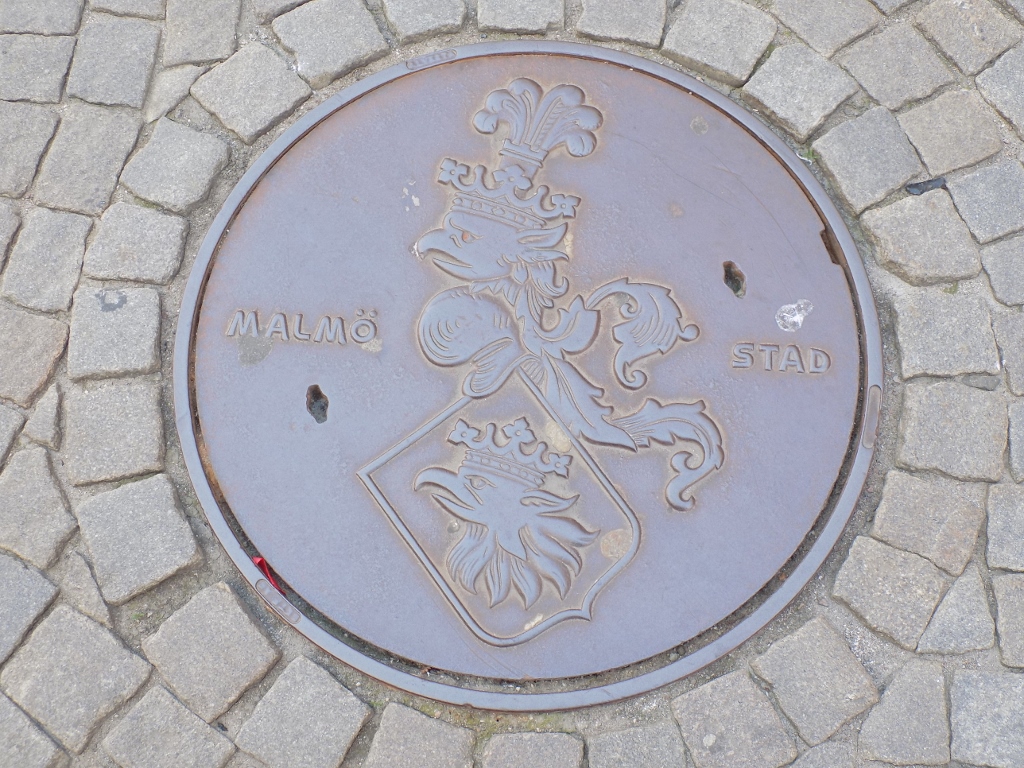 Heraldic griffin
Heraldic griffin
In Gustav Adolfs Square, the griffin sculpture I wanted to see was squatting on the top of a large metal sphere.
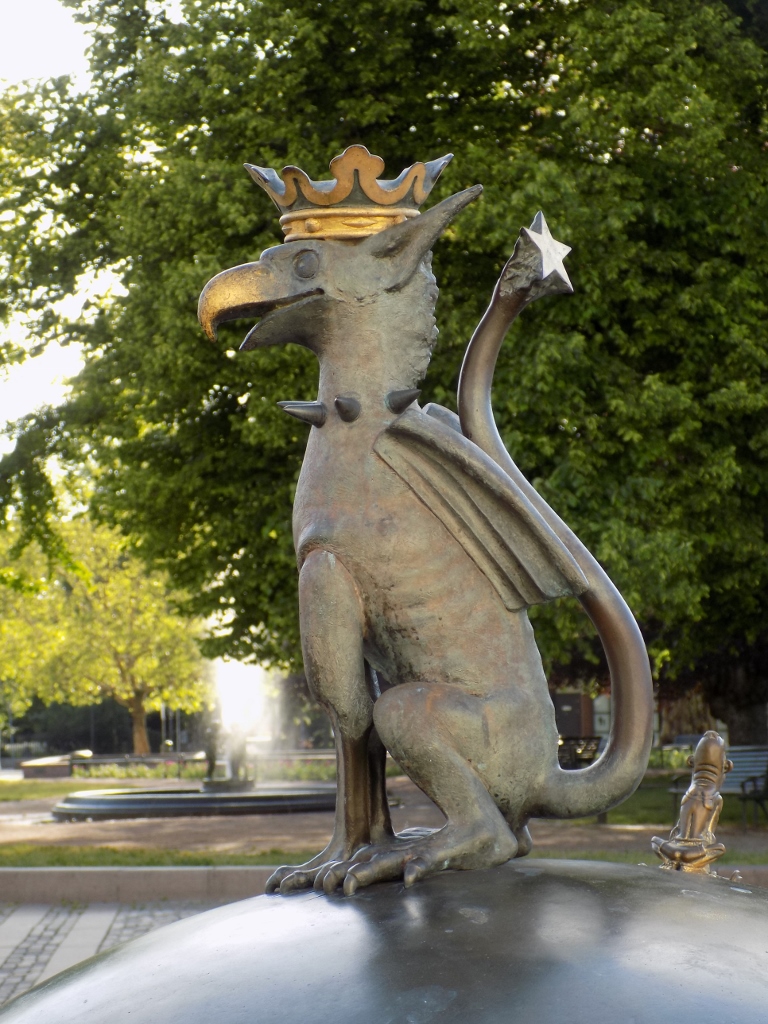 Griffin
Griffin
Since I did what I wanted to do, I started to return towards the railway station, but following a slightly different route. Thus I reached yet another square, Lilla Square (Lilla Torg) where I even thought of visiting the Form/Design Centre that exhibits what is best in the Swedish and the Scandinavian design, but the centre was unfortunately closed. I had to content myself with a view at this pretty square full of cafés and restaurants.
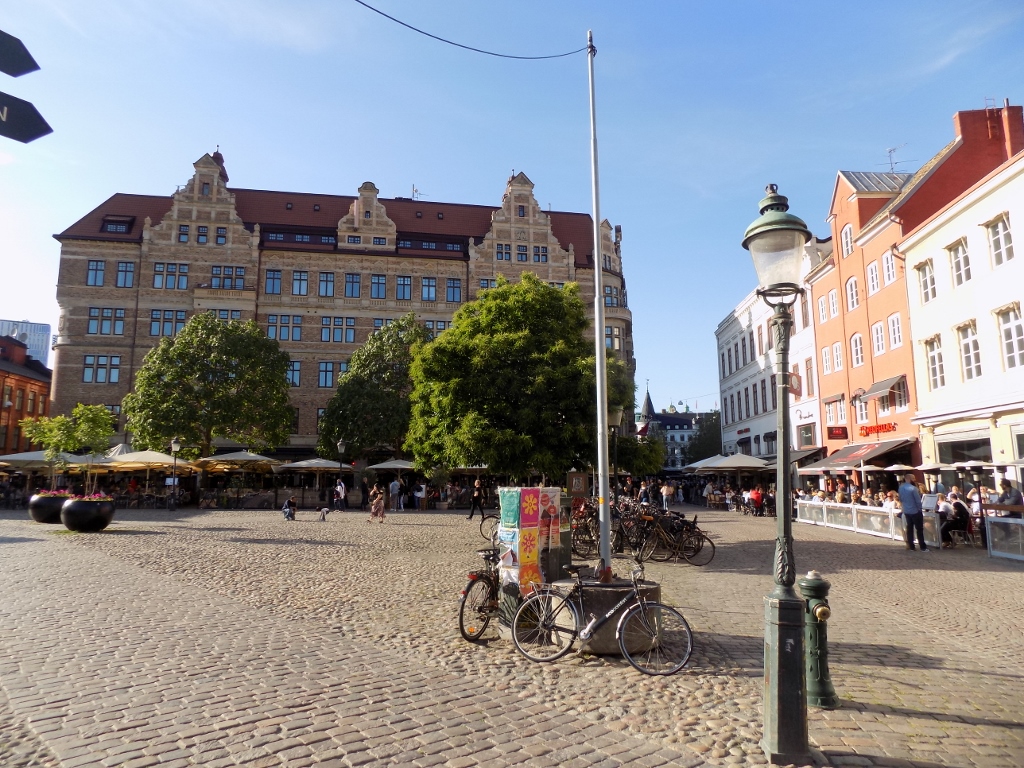 Lilla Square
Lilla Square
A little later I returned to Lund with a plan not to go anywhere the next day, but rather to go only around the town itself. Since the day’s plan was so simple, I allowed myself to be a bit lazy in the morning and then I started with a leisurely stroll around the downtown area. Although I had already walked by the Cathedral in Lund, several times in fact, now I also went in so that I could see it from there as well.
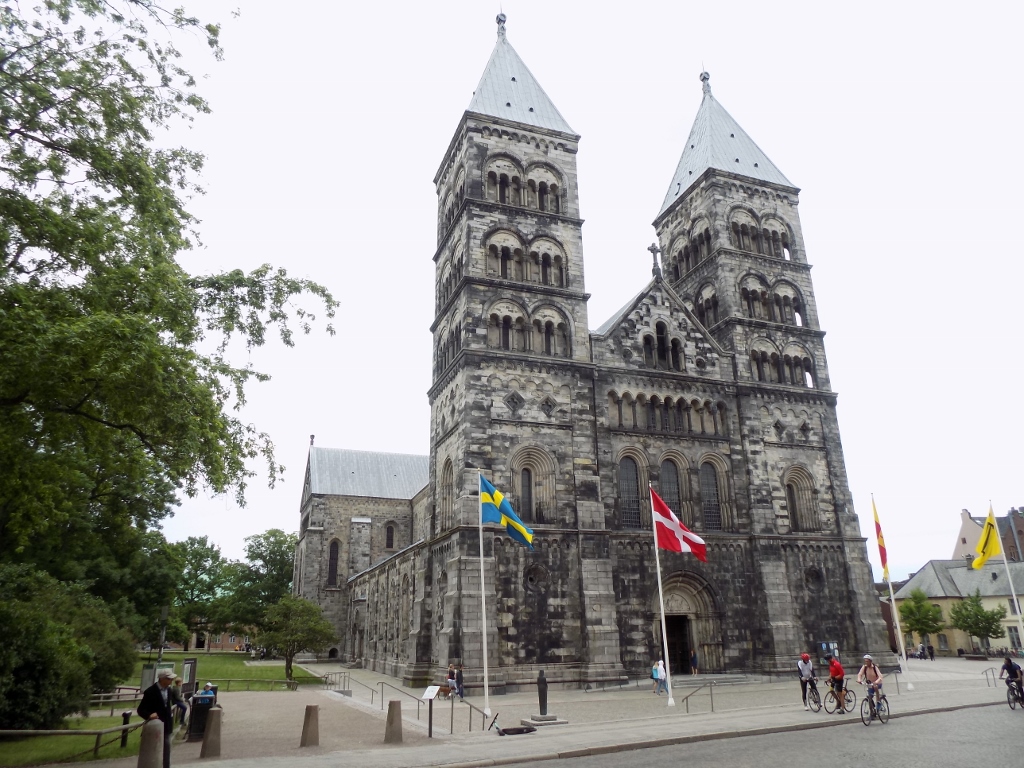 Lund Cathedral
Lund Cathedral
The building of the edifice started at the end of the 11th century and around the middle of the 12th century the Cathedral was consecrated. In other words, the Cathedral was already in function when Absalon, the founder of Copenhagen and the Bishop of Roskilde, was also the Archbishop of Lund (1178-1201). This was an interesting piece of data for me, since it was precisely the previous autumn when I visited Denmark, Copenhagen and Roskilde, and when I learned about Absalon, that I made the decision to visit Lund soon. In this way, I have made a clear link between my trip to Denmark in 2018 and my trip to Sweden in 2019, and for me this was interesting.
But, let me go back to the story about the Cathedral in Lund. It has a very nice apse from the beginning of the 12th century, as well as a very interesting astronomical clock from the 14th century.
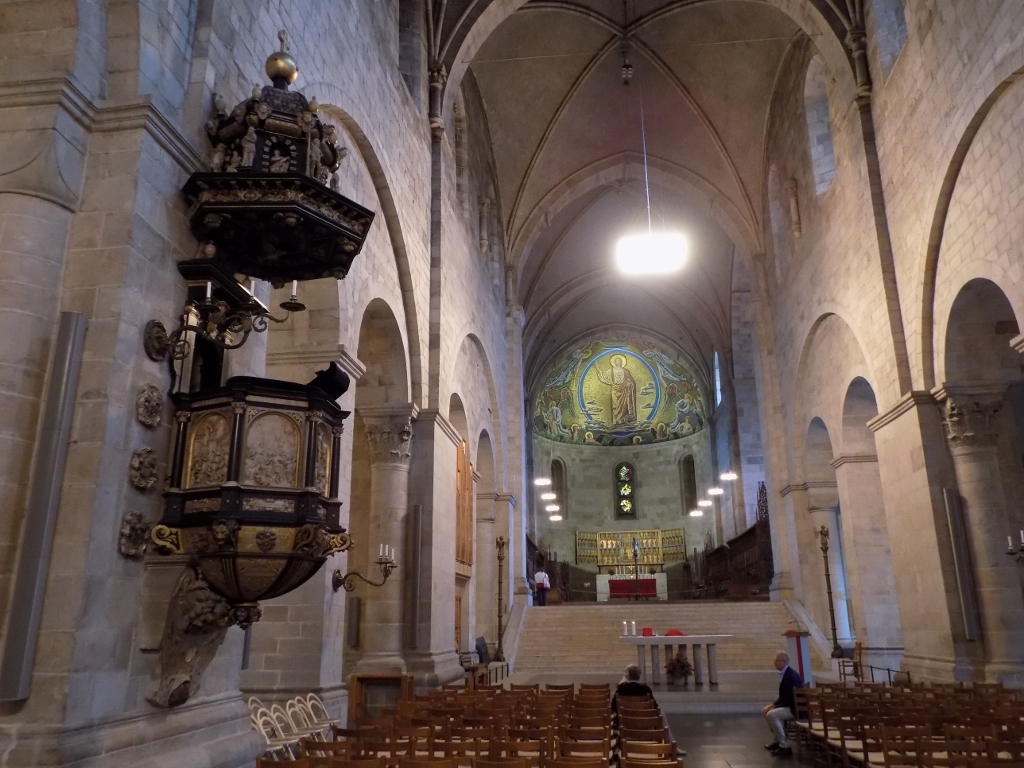 Interior of the Lund Cathedral
Interior of the Lund Cathedral
As it happened, I arrived at the cathedral just a little bit before the noon and then I realised that the clock would “turn on” at noon, so I took up a fine place and waited for that to happen. In the meantime, the priestess (yes, yes, this was another woman in this role) was telling something nice to the numerous children who were gathered there and afterwards she also held the service, of course in the part of the cathedral that is meant for that, not beside the clock, but I did not stay for the mass. My intention was to return a little later.
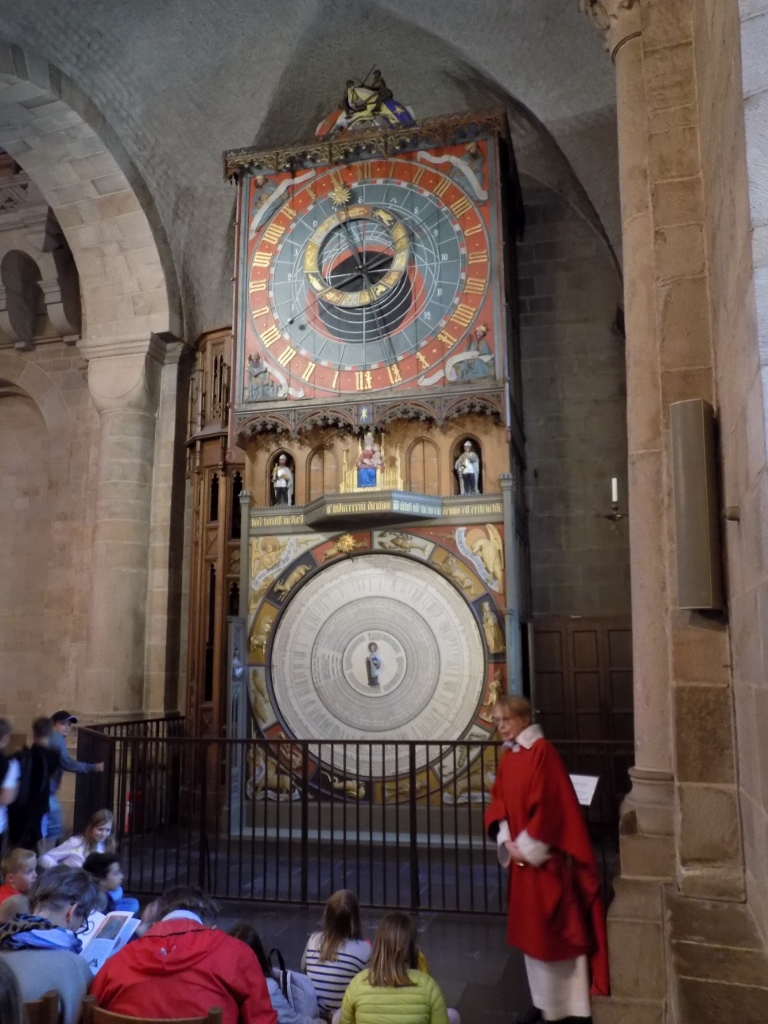 Astronomical clock at the Lund Cathedral and the priestess in the red and white garment
Astronomical clock at the Lund Cathedral and the priestess in the red and white garment
First I went to a local restaurant where I ate a fantastically tasty fish from the northern seas and then I went to the nearby historical museum Kulturen. There I was mostly interested in the architectural and ethnographic section in the form of an open-air museum.
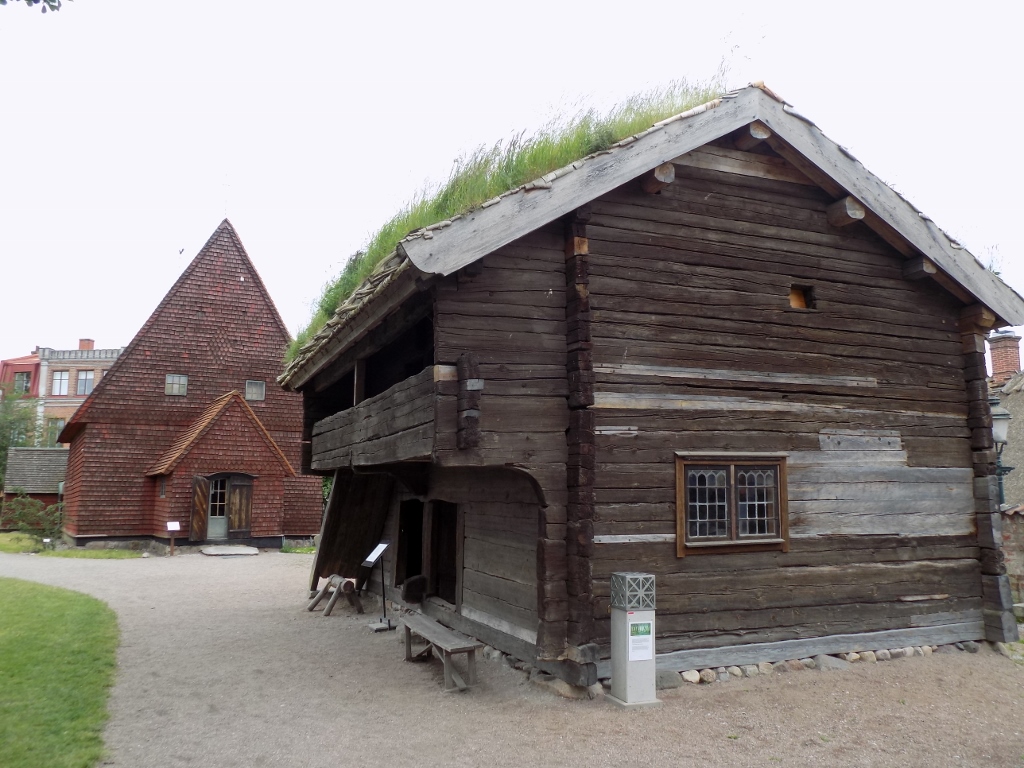 Kulturen – a house from village Uranӓs (right) and a church from village Bosebo
Kulturen – a house from village Uranӓs (right) and a church from village Bosebo
In this open-air museum there are several buildings that used to be used by different social groups and all of these buildings have been bought over time and transferred here. Some of these structures were used by peasants, but there are also burghers’ houses and those used by members of the nobility or the clergy. For some of them it is also known by name who used to live in them at the time when the building was bought for the museum, as well as other data. Thus, for instance, the wooden house from village Uranӓs was bought in 1892 and what is known about it is that it was made of timber cut during the winter of 1711-1712. In addition, some wooden beams or boards from the beginning of the 16th century were also used for the construction of the house and some of its floor boards can be dated back to the year 1305. How this dating back was done, I do not know, but when I read these data I found them completely fascinating, so I made sure I took note of them.
The church from village Bosebo was built in 1652. Since it was due to be demolished in 1894, the museum bought it and transferred it here.
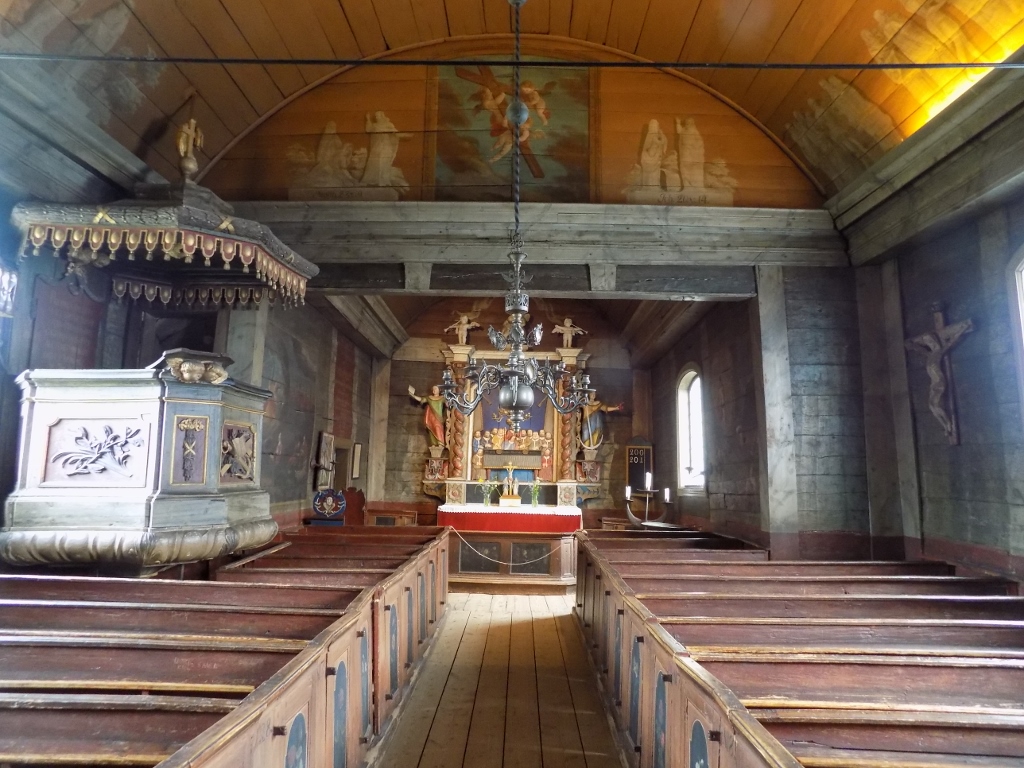 Kulturen – interior of the church from village Bosebo
Kulturen – interior of the church from village Bosebo
Next to each of the buildings there is information about it, but I will certainly not go into that level of detail now. In any case, I really found the visit to this museum to be very interesting and I certainly enjoyed it.
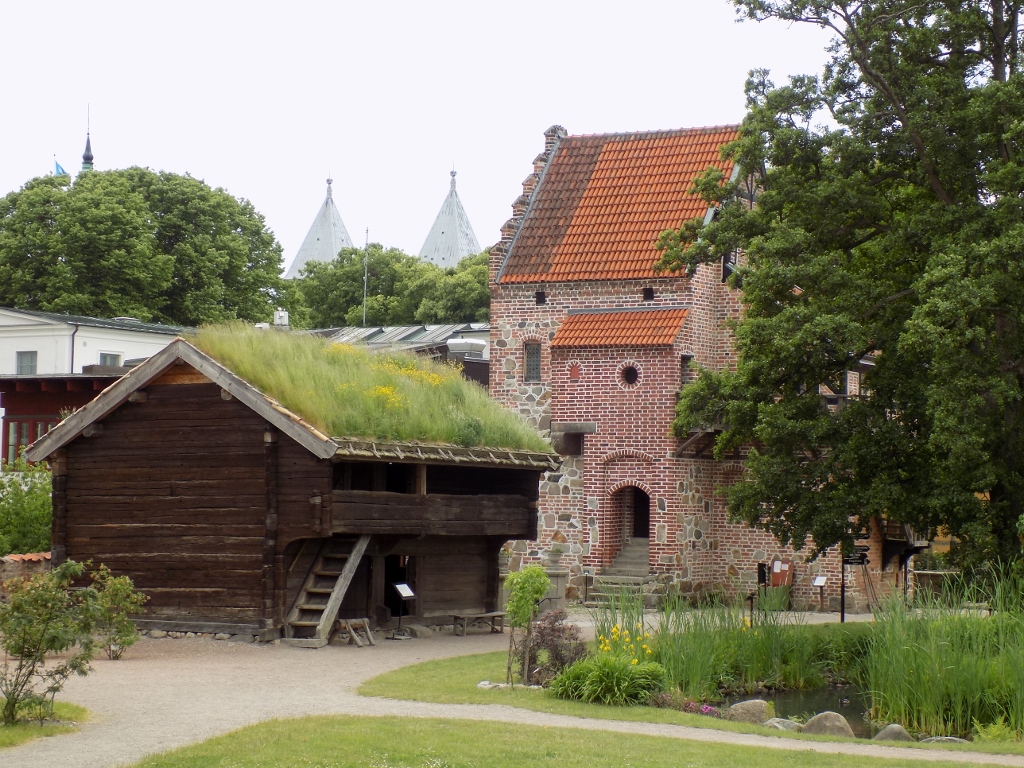 Kulturen – House from village Uranӓs, with the roofs of the Cathedral’s towers in the background
Kulturen – House from village Uranӓs, with the roofs of the Cathedral’s towers in the background
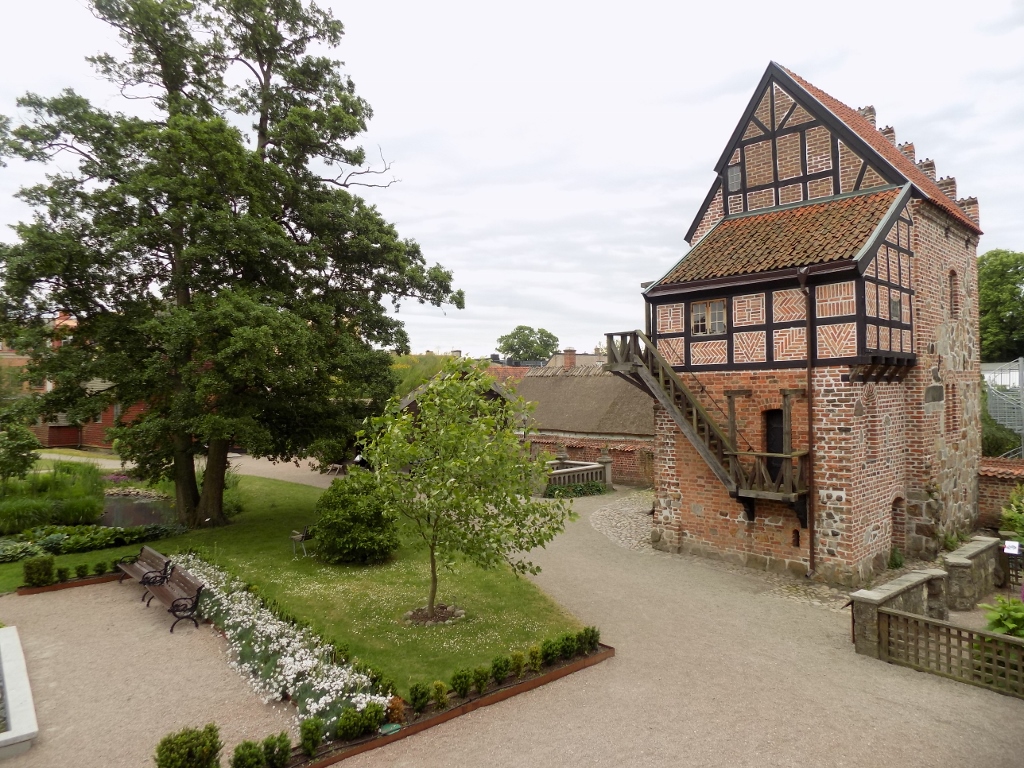 Kulturen – yard of the open-air museum and the 14th-century Deacon’s House
Kulturen – yard of the open-air museum and the 14th-century Deacon’s House
Following my visit to the open-air part of the Kulturen museum, I headed for the Botanical Garden. Although Lund is quite a contemporary town, I happened to walk along a cobbled street that was reminiscent of some old times. And this was precisely the most striking impression from this short trip around south Sweden – a great mixture of the old and the most modern new.
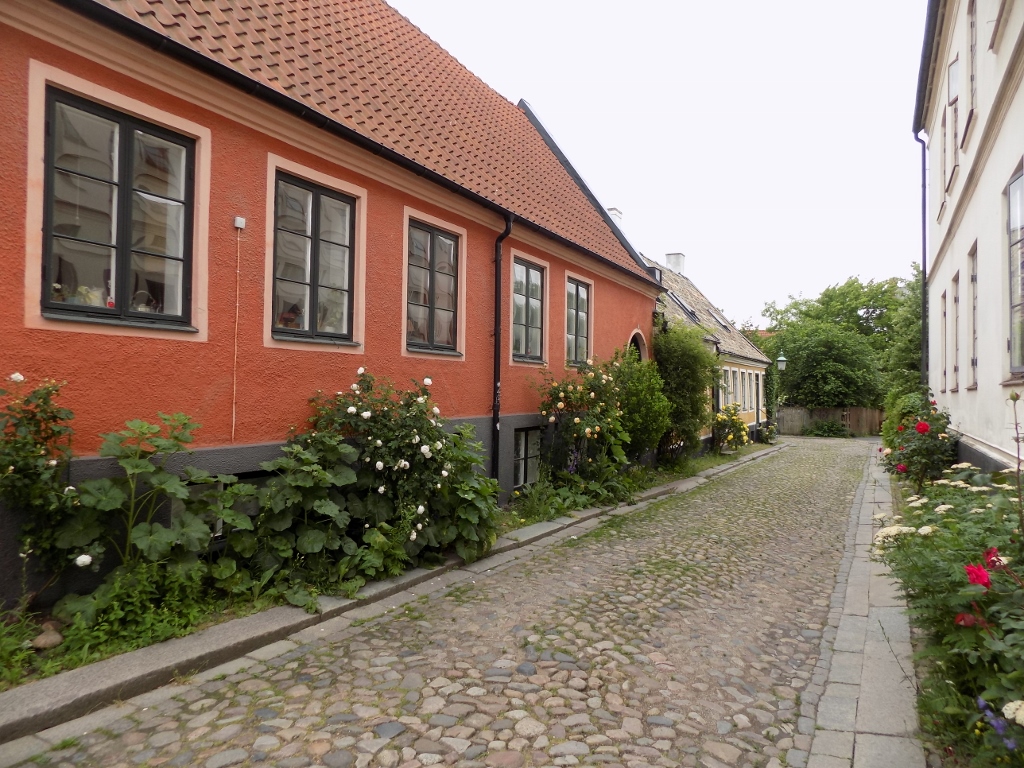 An “old” street in Lund
An “old” street in Lund
Since I had to leave for the airport later that afternoon, I actually did not have too much time to visit the Botanical Garden that is managed by the University in Lund and that was founded in 1690, but was moved to its present location in the second half of the 19th century. In addition to the vegetation that can be seen out in the open, there is also a large greenhouse that is divided into several sections, so that each one can provide a special climate required for the growth of specific plants.
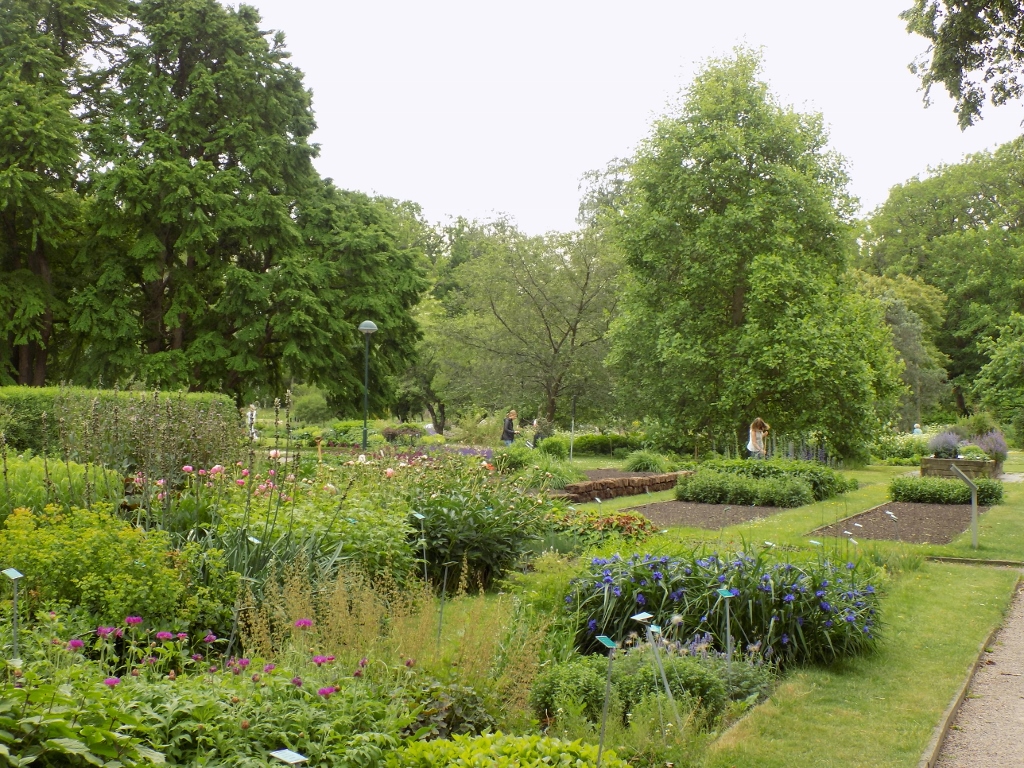 Botanical Garden in Lund
Botanical Garden in Lund
Still, of all the plants that grow in the garden, and there are some 7000 species, what caught my eye in particular were some tiny little animals that I first heard and then noticed as they peacefully walked between some foliage in one of the greenhouse’s sections. These were king quails (Excalfactoria chinensis), the smallest variety of quails in the world.
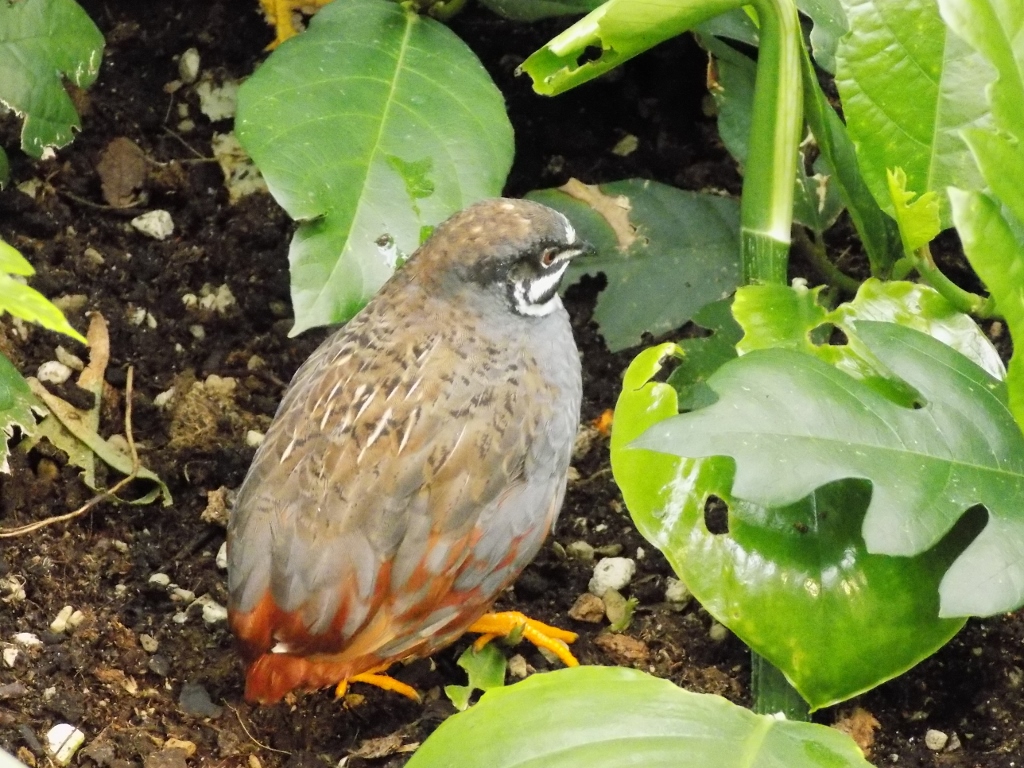 King quails
King quails
On my way back to the flat, I stopped once again at the Lund Cathedral in order to visit its crypt since it was previously closed on account of the service that was going on at the time. The crypt is truly impressive and with a large number of interesting pillars from the beginning of the 12th century. There are also a couple of them linked to the legend about Giant Finn, St Lawrence and the construction of the Cathedral.
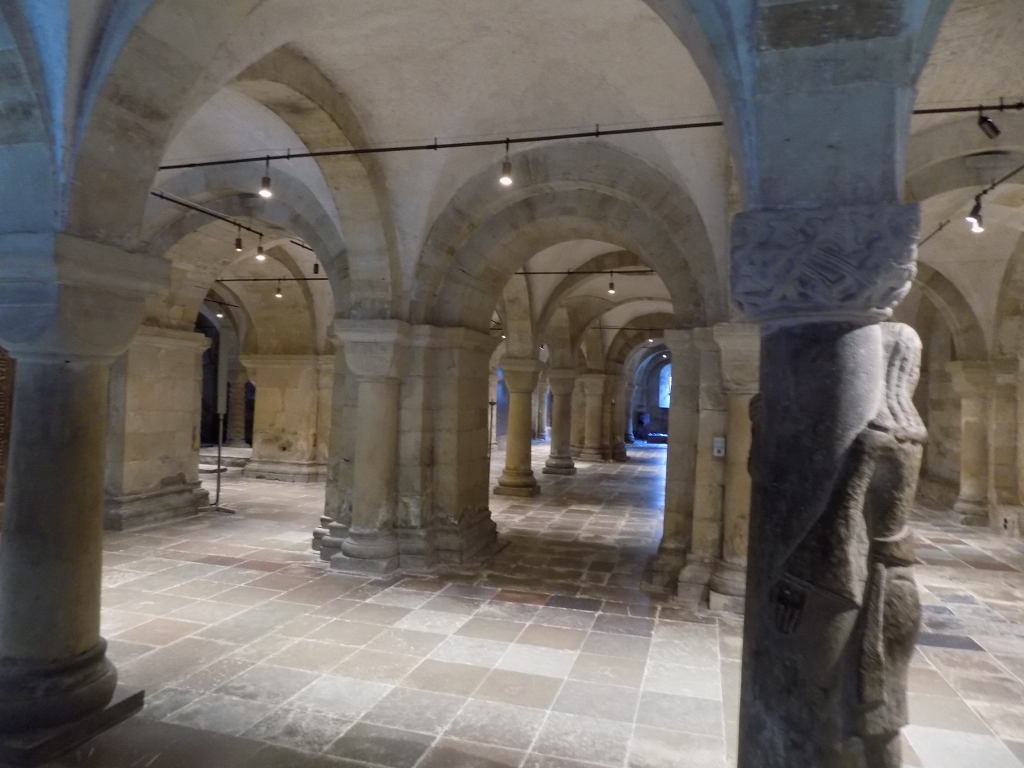 Crypt of the Lund Cathedral
Crypt of the Lund Cathedral
But... as for the details about this legend, I will let them be found by those who go to visit these exceptionally picturesque settlements of south Sweden.